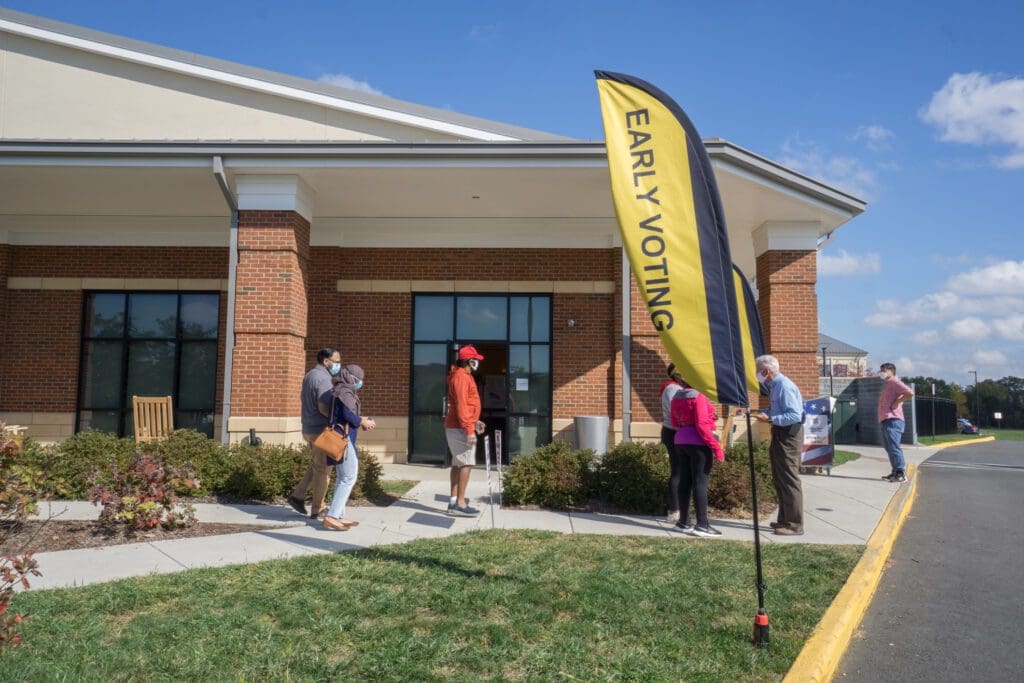The Campaign Manager’s Summer Playbook


Summer is when campaigns start to heat up. Voters start paying attention around the Fourth of July, and it creates a momentum that pretty much continues until Election Day. This heightened voter interest means it’s time for you to ramp up voter contact efforts. To make the most of this opportunity, you’ll need a robust organizational structure.
Unfortunately and inconveniently, summer is also when most of the spring semester interns go back home, leaving your office empty. To make up for it, you’ll need to be ready to capture that new voter interest and turn it into volunteer activity. But your campaign won’t be the only one – you’ll be competing against all the other exciting races in your area, with the statewide candidates and the president to recruit and retain these volunteers for yourself.
This sudden change of pace, moving from the spring base-building phase to the summer volunteer mobilization phase can catch new campaigners off guard. To get ahead of the rest, you’ll need to engage your volunteers with meaningful and enjoyable work, or you’ll watch them flake off and get poached by other campaigns.
Obviously, the most important thing for your campaign in the long term is contacting voters in your target universe. Here, volunteers help by phone banking, texting, or DMing their networks, or through good old-fashioned door knocking. But the efficacy of these activities, the sad truth is that a lot of newbie volunteers are intimidated by the idea of talking to strangers–they build it up in their heads that voters are going to argue with them, yell at them, and just generally be unpleasant. Nobody wants to sign up for that. To ease them into the process, start by involving them in volunteer outreach, such as calling other volunteers. This allows them to engage with guaranteed friendly individuals and gradually get comfortable with voter contact.
Street festivals, fairs, and parades are excellent opportunities to connect with a large number of supporters in a small amount of time. Start by calling all the supporters you’ve identified up until now, and invite them to these events. This helps to strengthen their connection to your campaign and is a relatively easy ask. Marching in a parade or manning a booth at a fair is a lot easier for first-timers than directly being asked to knock on doors.
Just remember why you’re here, and be clear about that with your team. Although the attendees at these events are not necessarily all registered voters, aren’t guaranteed to live in your district, and are almost certainly not in your ID target universe, they are still valuable as potential volunteers.
Once you find them, you have to manage them, and that requires you to have the proper tools. I’ve seen too many campaigns with stacks of volunteer sign-up sheets that never get transcribed into a database of any kind. This makes it nearly impossible for staff to keep notes or make sure your prospects are being tracked and engaged properly.
An Excel or Google Sheets is the minimum requirement for tracking volunteers, but upgrading to project management software like Smartsheets, Asana, or Trello can significantly improve your ability to stay in constant contact. Pick a method that allows you to easily share a prospect’s info with your team, keep notes on who has called them, what they’ve said, and if/when they’ve shown up to an event.
A great way to make sure volunteers are constantly being contacted is by automating the process. Add them into a regional or issue-specific chat group on platforms like WhatsApp, Slack, or GroupMe which helps to ensure continuous interaction and engagement. They can share tips, tricks, and interesting stories from the campaign trail with each other. Just make sure you have a staffer in the group to moderate and keep the conversation flowing in the right direction. Again, have your staff keep good notes on who is active and encouraging, and who might need a little extra attention.
So you’ve found your volunteers, you’re getting them active, tracking them, and making sure everyone is feeling engaged and important. Next is to make sure they’re effective at voter contact. I cannot underscore enough the importance of setting up a training program. I like to start by bringing in an outside group, like the Leadership Institute, to hold a large open event every so often. I extend the invitation to any supporters or party members who want to show up; this is another great volunteer recruitment tool.
Beyond these one-time large events, I also want my now-trained staff to pass on what they’ve learned to others in their regions. So, I have them set up and lead smaller training sessions for their volunteers on a regular basis. This approach ensures volunteers are well-trained, feel valued, and can get one-on-one attention from the staff member most likely to be their point of contact.
I’ve also started encouraging campaigns to adopt volunteer mentorship programs. By pairing new volunteers with those experienced in the field, you create an environment where newcomers can quickly learn the ropes and feel more confident in their roles. Mentors can help accelerate the learning curve by providing guidance, answering questions, and sharing their own experiences. Further, regular check-ins and feedback sessions between mentors and mentees ensure continuous development and engagement, and build a stronger community around your campaign. If someone is at risk of flaking off, you have an extra line of support, keeping them connected.
There are only so many days left until the election and early voting is going to be here before you know it. If you’re like most campaigns, you don’t have the volunteer power to contact every voter before time runs out. You cannot wait until September to start mobilizing your volunteers, so you need to prepare your campaign during the summer. By focusing on personalized engagement, regular recognition, and strategic data use, your campaign can build a resilient and effective volunteer network poised for success in the months to come.
Caitlin Huxley is a certified project manager and has managed campaigns since 2010. She is the author of Ancient Wisdom for Modern Campaigns: Lessons from Sun Tzu’s Art of War.


